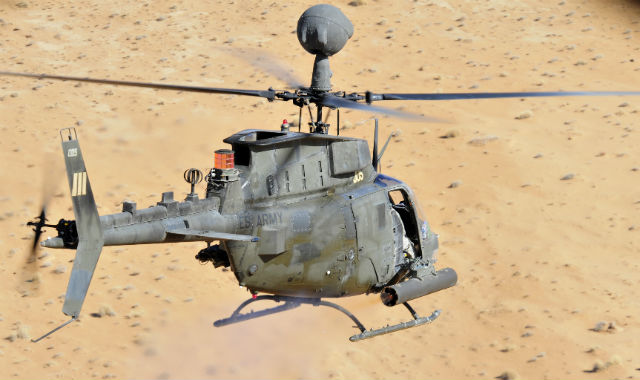The US Army has warned that its rotary fleet will continue to be streamlined as US budget sequestration increases pressure to reduce costs.
There is a “dramatic increase” in budgets during wartime operations and a rapid decline in peacetime, Heidi Shyu, assistant secretary of the army and army acquision, told the Defence IQ International Military Helicopter conference in London on 20 January – and the army is currently having its budget reduced following the withdrawal from Afghanistan.
“We are hitting the trough now,” she says. “Our budget has been under significant pressure.”
While there was investment in new technologies following the Vietnam War, and the Gulf wars brought an increase in digitisation, Shyu says that the army's budget for science and technology is currently at its lowest, while the research, development and acquisition (RDA) budget has “come down twice as fast”.
Industry is hoping for an increase in defence budgets, she says. However, she notes that "this will only happen if we get rid of sequestration. It’s hard to strategically plan for your portfolio when you don’t know what is going to happen next year.”
The largest allocation for the army’s FY15 budget is for personnel – 46% of the total, or $121 billion. As the number of deployed soldiers decreases post-conflict, other budget allocations will go up, Shyu says.
Through the army’s aviation restructuring initiative (ARI), revealed in 2014, the force is looking to streamline its fleet to provide capabilities that will meet new threats, but at a lower cost.
“We have to get rid of old stuff that we don’t need because our maintenance costs are huge,” Shyu says, adding that divestment of the army’s rotary assets is a priority. “As part of the fiscal challenge we’ve had to divest from seven types to four.”
This would mean a reduction of 750-800 aircraft. To increase savings, programmes will be cancelled together with any previously-planned upgrade efforts, she says.
As a result, ARI will see a fleet of Bell Helicopter OH-58D Kiowa Warrior armed scout aircraft retired, as well as the OH-58A/Cs that are utilised as advanced trainers.

US Army
In addition, the Bell TH-67 Creek primary trainer will be sold as surplus equipment, and Airbus Helicopters LUH-72A Lakotas will be used for training instead.
In the armed scout role, the army’s Boeing AH-64D/E Apaches will team with Textron Systems RQ-7B Shadow and General Atomics Aeronautical Systems MQ-1C Gray Eagle unmanned air vehicles.
The Shadow is being equipped with a secure datalink, and money is being invested in a common ground control station that will also be able to control both the Shadow and the Gray Eagle.
The army is also looking to “reset equipment” to take it back to “pre-war era” standards, Shyu says.
“We have maxed out in terms of size, weight and power,” she says, adding that the force's modernisation efforts will achieve more balance.
The army's other developmental efforts include a programme to develop a common infrared countermeasures capability and an effort directed at an improved turbine engine for rotorcraft operating in hot and high conditions. An engineering manufacturing and design competition for a joint air-to-ground missile is also expected soon.
Source: FlightGlobal.com





























